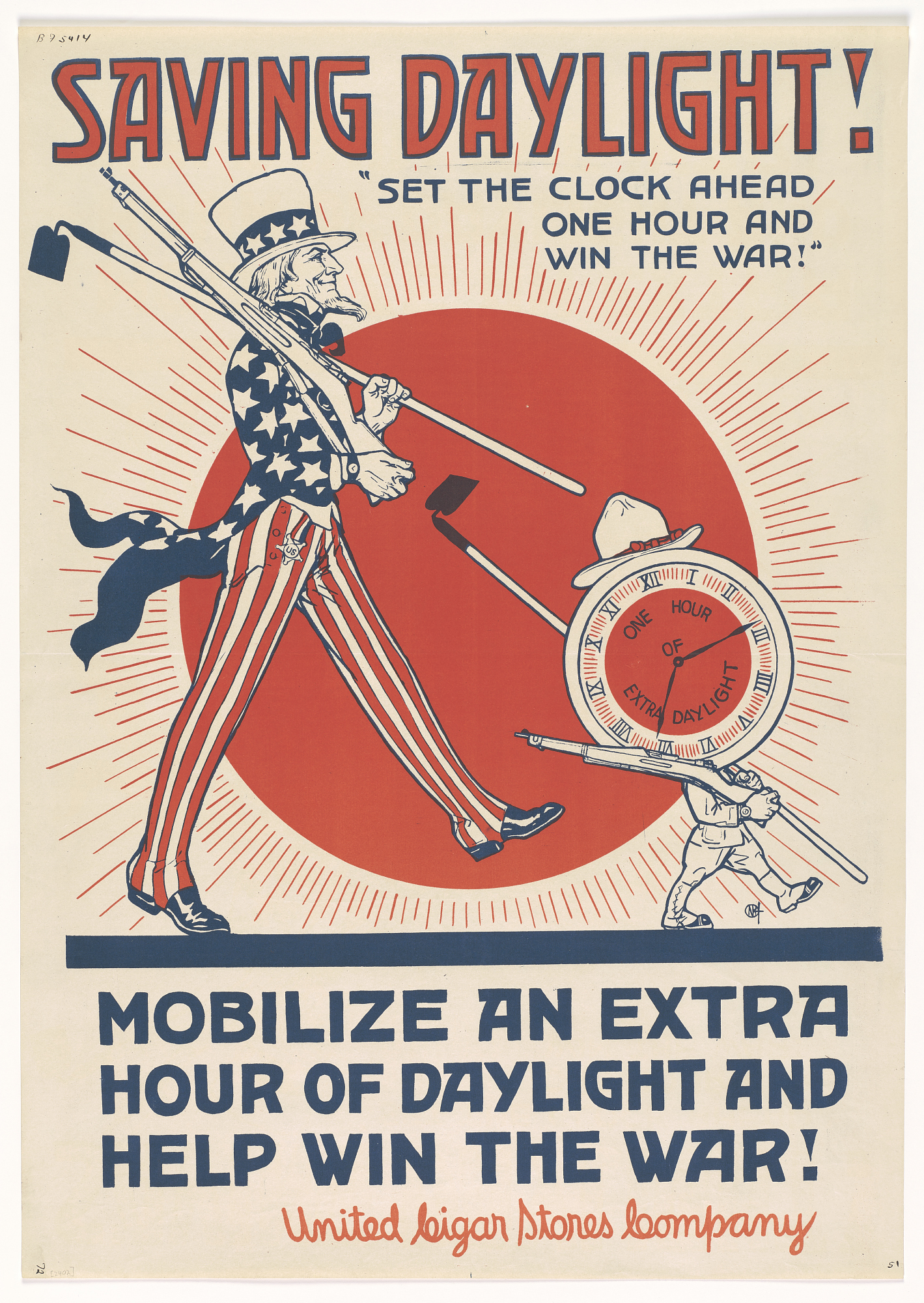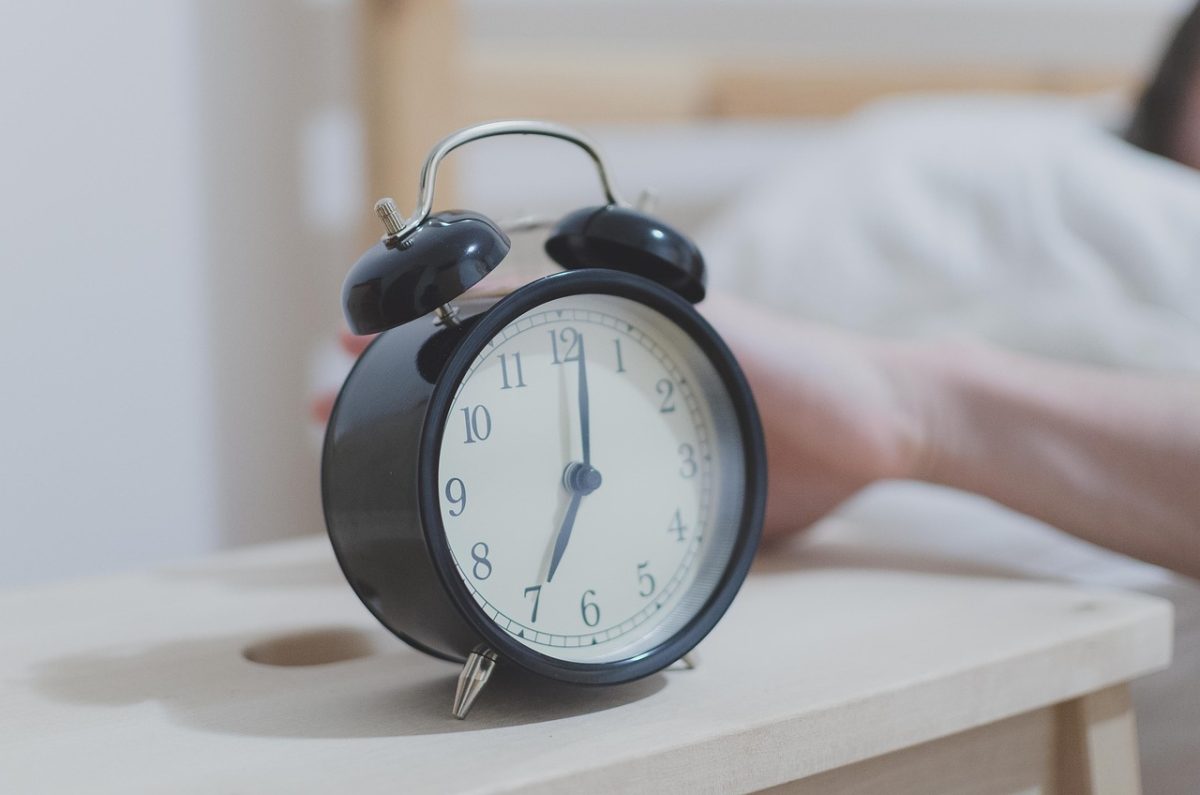Daylight saving time has come again, and like clockwork, on the second Sunday of March we gained one hour of sunshine but we lost one precious hour of sleep. Unfortunately this loss of sleep will last almost eight months until we go back to standard time on the first Sunday of November. For many, daylight saving time is a minor inconvenience, but many are wondering why we have this strange tradition and the question has come up again: should we get rid of Daylight saving time?
The answer is clearly yes! Daylight saving time has been in effect for so long its reason for existing in the first place is long gone, and its negatives far outweigh its benefits. Daylight saving time should end because it does not help save energy, can lead to accidents, and has a negative effect on our mental health
The History of Daylight Saving Time

By United Cigar Stores Company (CC0)
Daylight saving time was started in the U.S. in 1918 during the First World War. It was created because leaders thought that if workers worked in hours where there was more sunlight than workers could work for longer and less fuel would be used throughout the workday. After the war ended, the clocks were set back to their standard time. However, daylight saving time lived to see another dawn and returned in 1942 during WWll. After the war ended in 1945, a poll said that only 17% of responders wanted to keep the time change all year.
Then, in 1966 the Uniform Time Act established the switching system that we know today. This act also made it so states could choose if they wanted to participate in daylight saving time or not. It’s important to note that a state can not be on permanent daylight saving time, however. Currently, there are only two states that do not have daylight saving time: Hawaii and Arizona.
Like during wartime, the energy crisis of the 1970s brought back the government trying to implement a permanent daylight saving time to conserve fuel. However, according to CNN, due to the time changes in the first month alone, eight kids were hit by cars driving in the dark. This along with plummeting public approval led to the permanent daylight saving time being ended in October of the same year.
Finally, in 2005 daylight saving time was increased to the time frame we know today of the second Sunday in March to the first Sunday in November.
Does Daylight Saving Time Do Its Job to Save Energy?
A 2008 Department of Energy study found a 0.02% reduction in the title primary consumption of energy. This number is so small it is practically non-existent and shows that maybe daylight savings time is failing at one of its only jobs. The entire point of the period was to save on energy after all. If Daylight Saving Time fails at one of its only jobs why should we keep it around? Another reason that proves we should get rid of Daylight Saving Time is that studies show that heart attacks increased when transitioning in and out of daylight saving time. This is incredibly concerning as it means that on top of failing its job Daylight Saving Time is also putting people into more danger. On top of this, a Science Daily study showed that “deadly car accidents spike 6% in week after time change.” This is even more proof that we need to remove Daylight Saving Time
However, daylight saving time does have some benefits. A Brookings article showed that crime dropped due to the extra hour of sunlight. Also, according to Science Direct, it seems like daylight saving time has a good effect on mental health; it seems people are happier when they have that extra hour of daylight.
Should It Stay or Should It Go?
We should absolutely get rid of Daylight saving time as it does much less good than harm. The system is outdated, causes health issues, puts people at risk, and fails at its only job of saving energy. Despite the seemed benefits, its time for the sun to set on daylight saving time
While it might seem that daylight saving time is both good and bad, the unfortunate reality is that if the U.S. wanted to get rid of daylight saving time, the process would be incredibly tedious, long, and drawn out. The bottom line is that it doesn’t look like we will be getting rid of daylight saving time any time soon.









